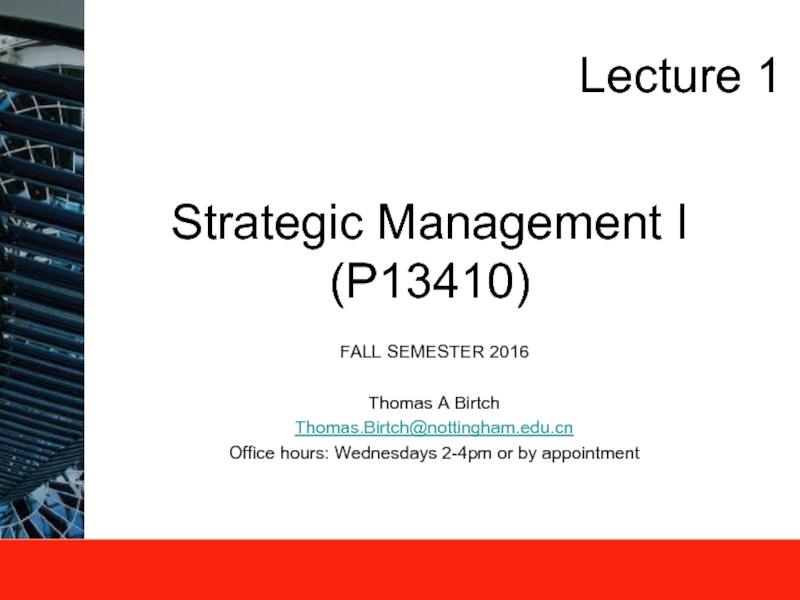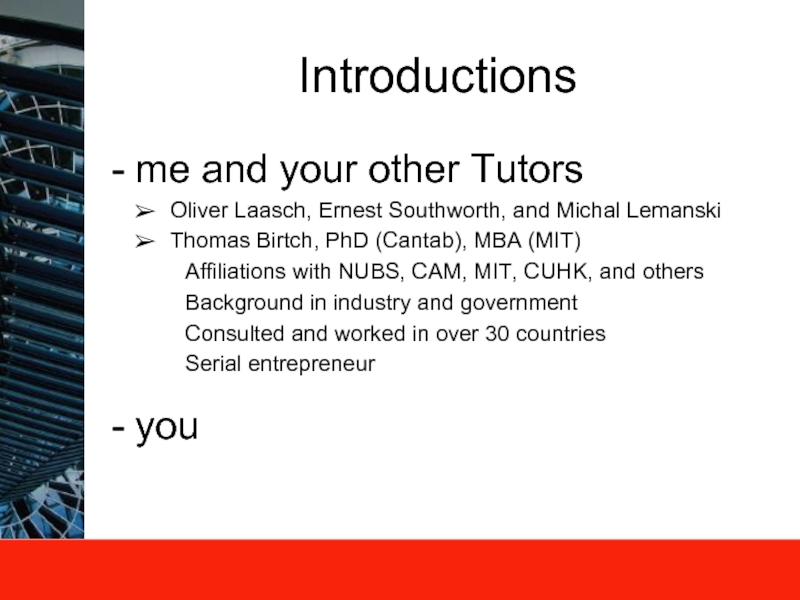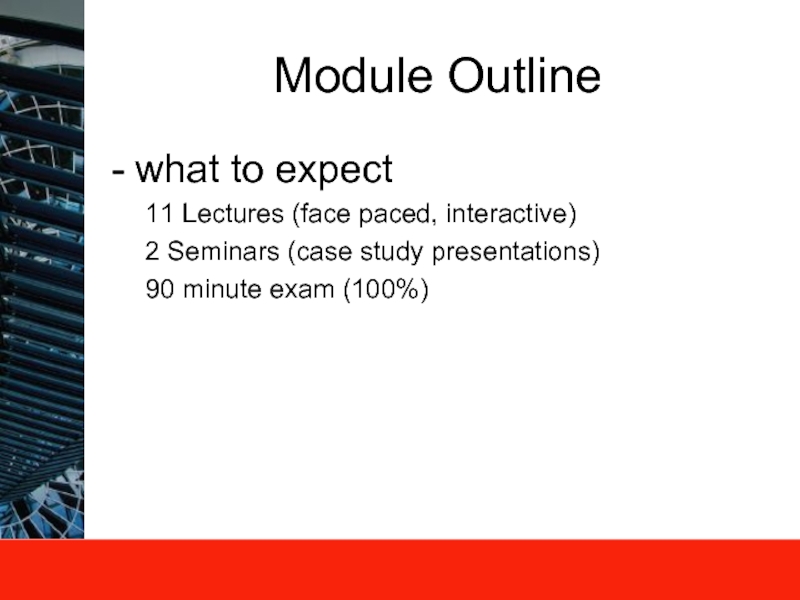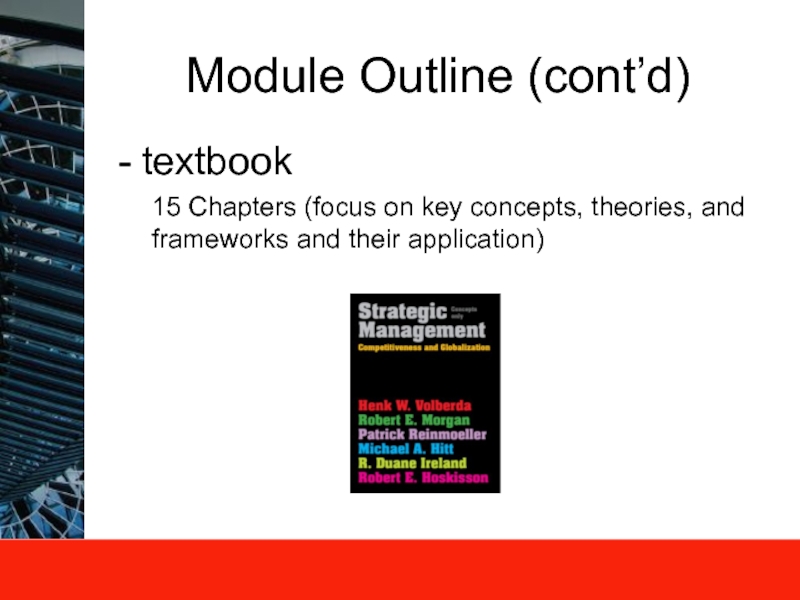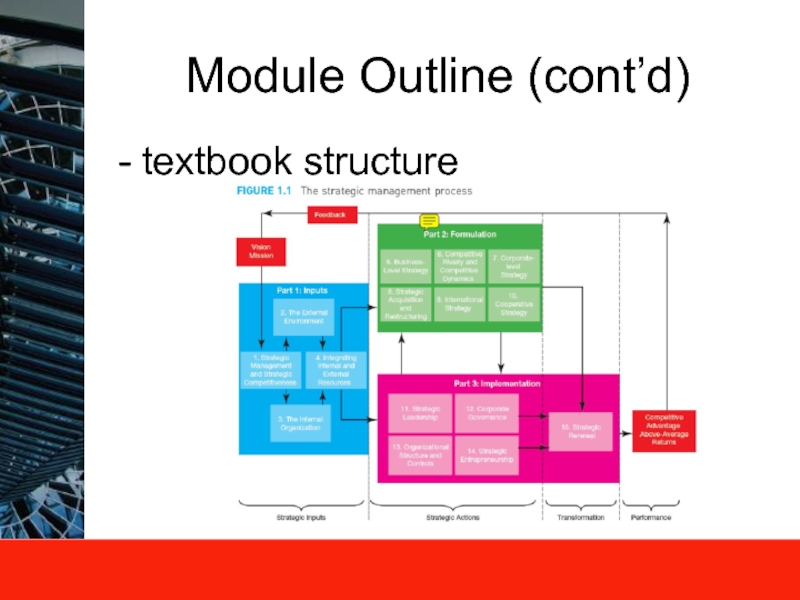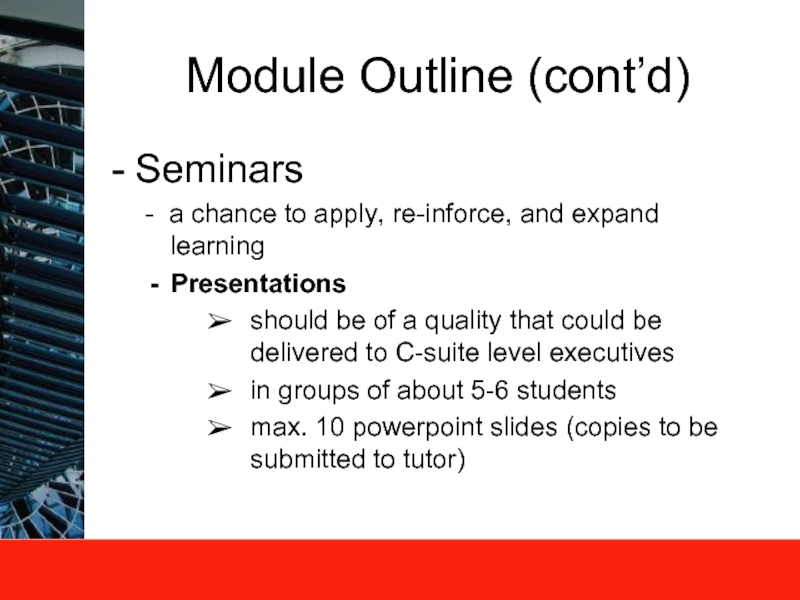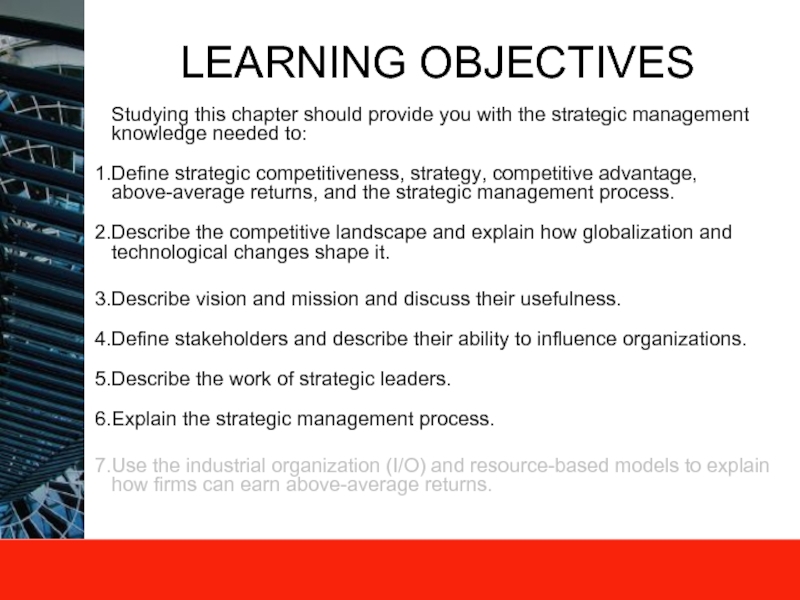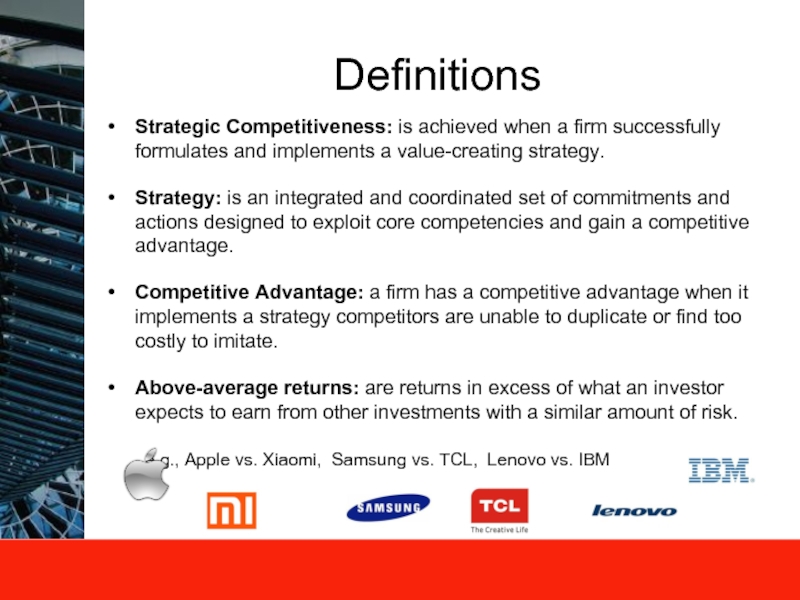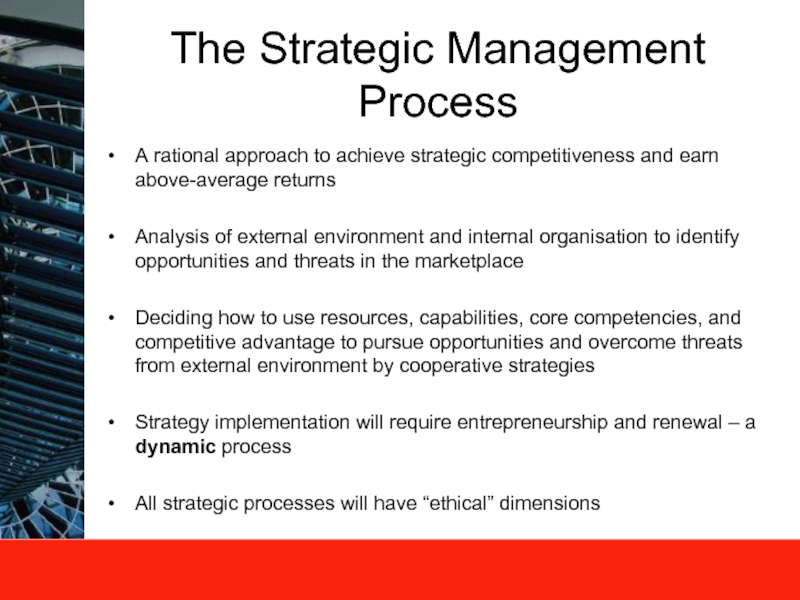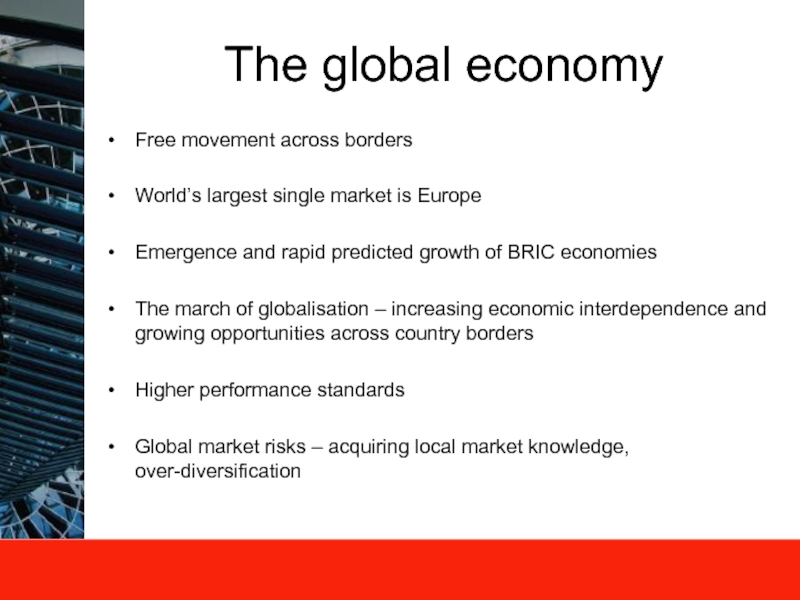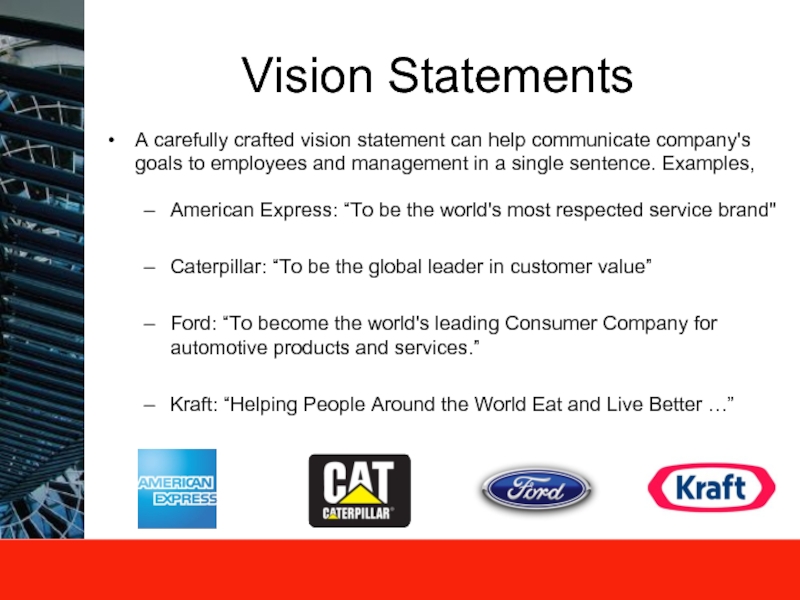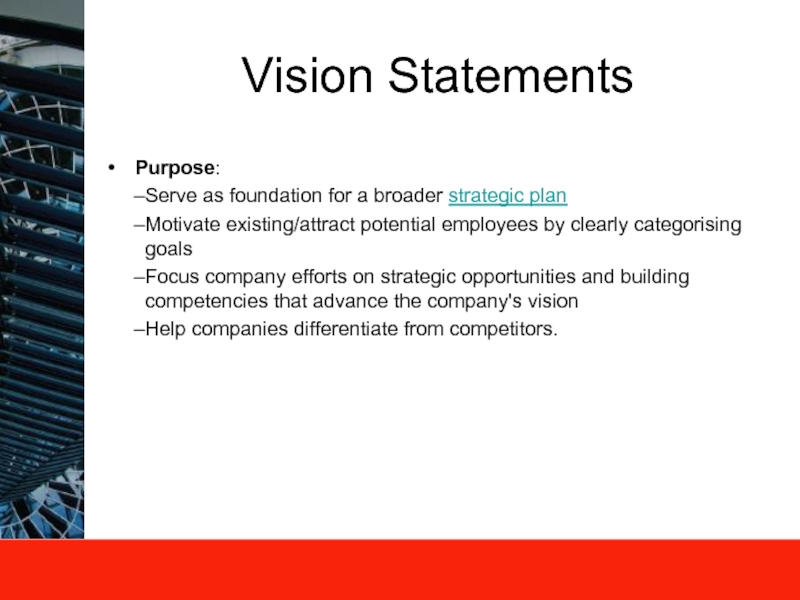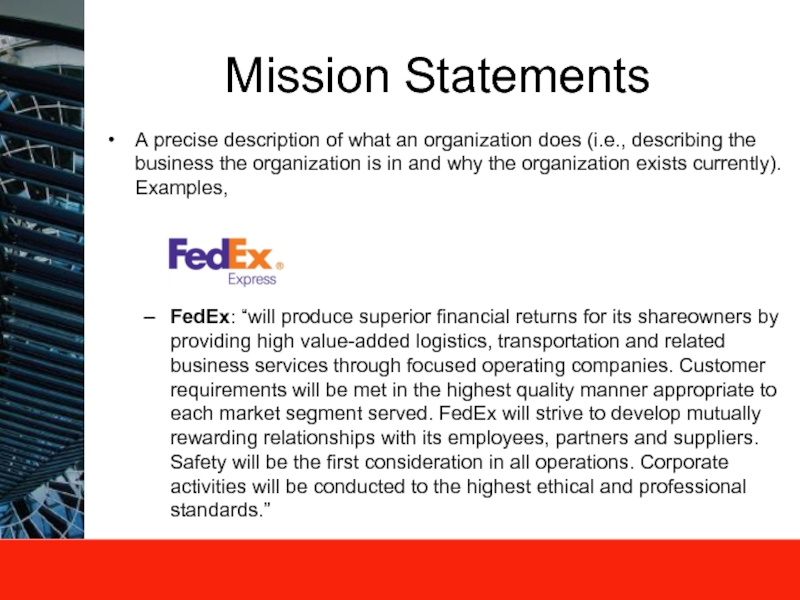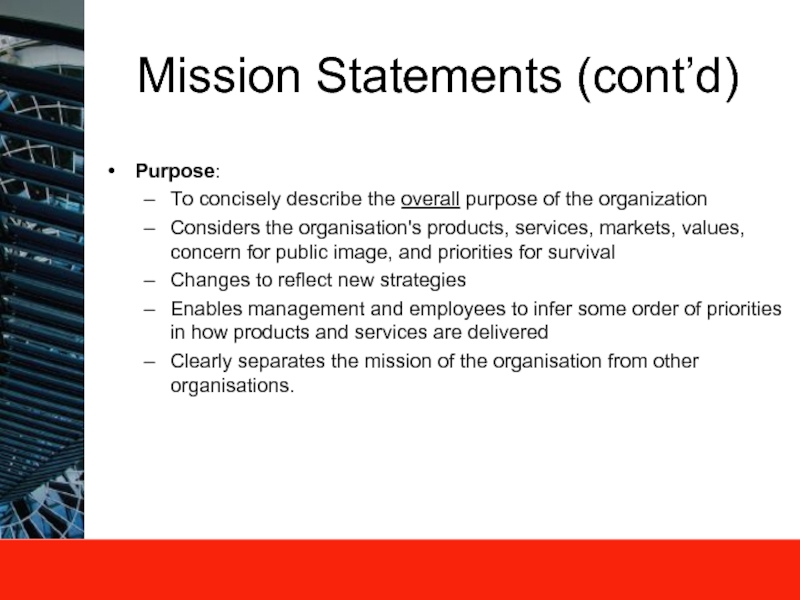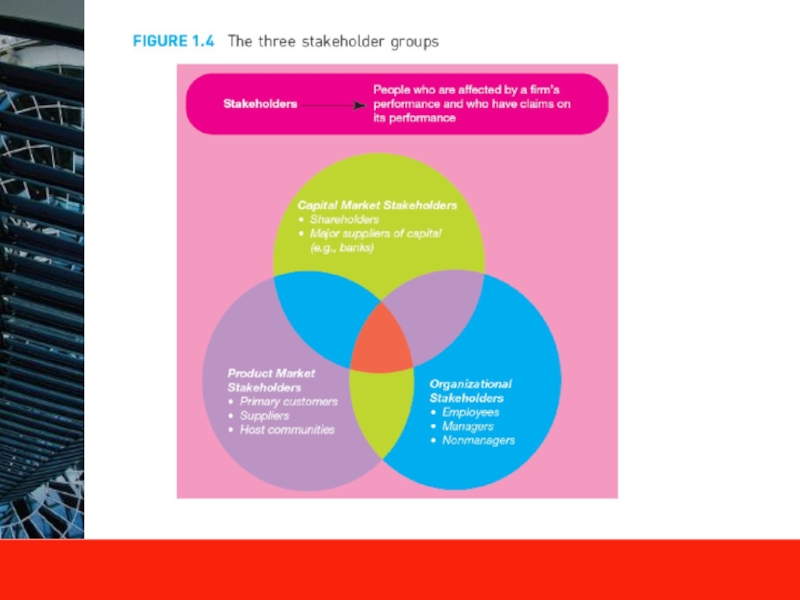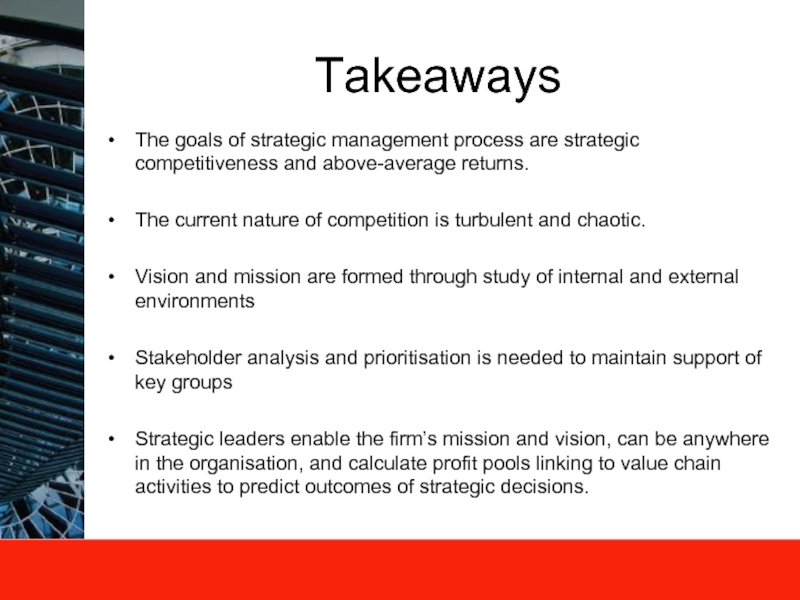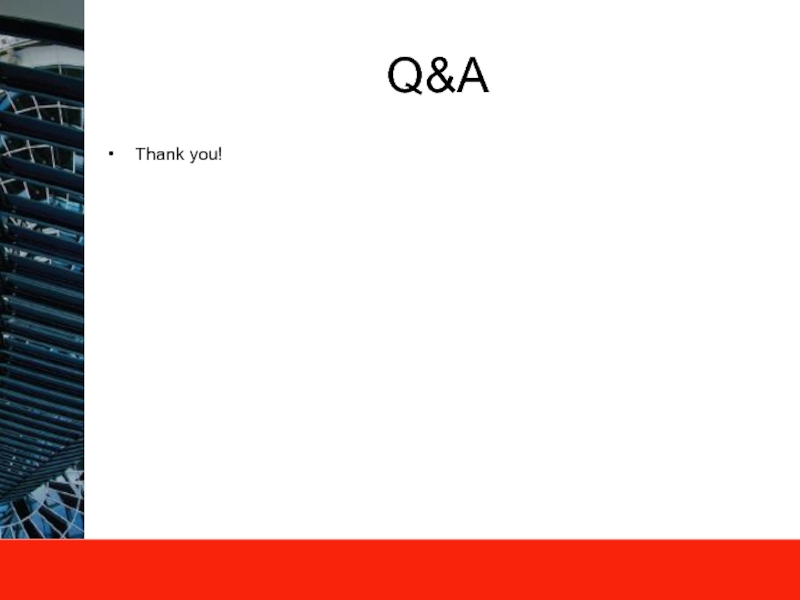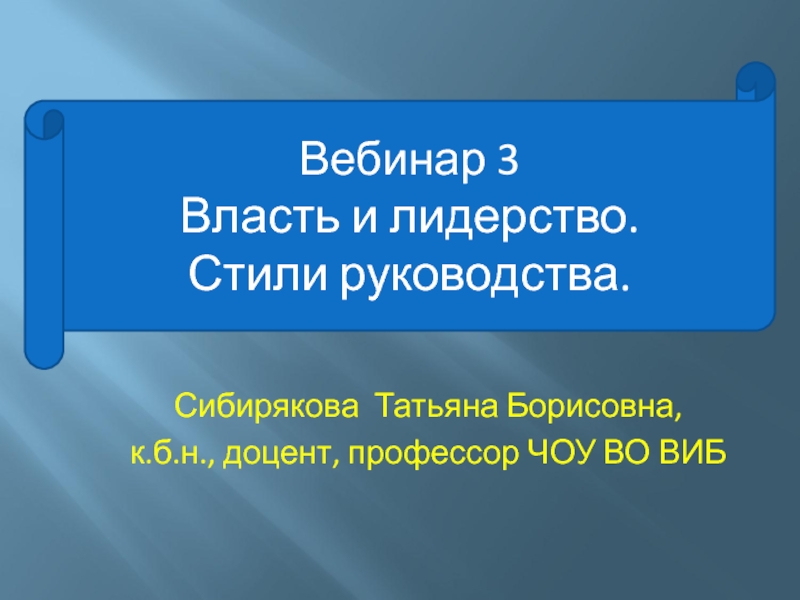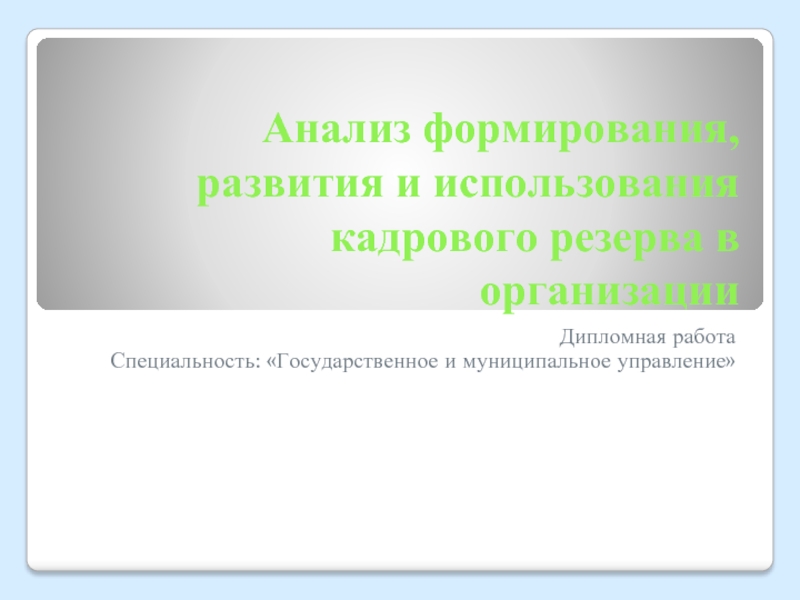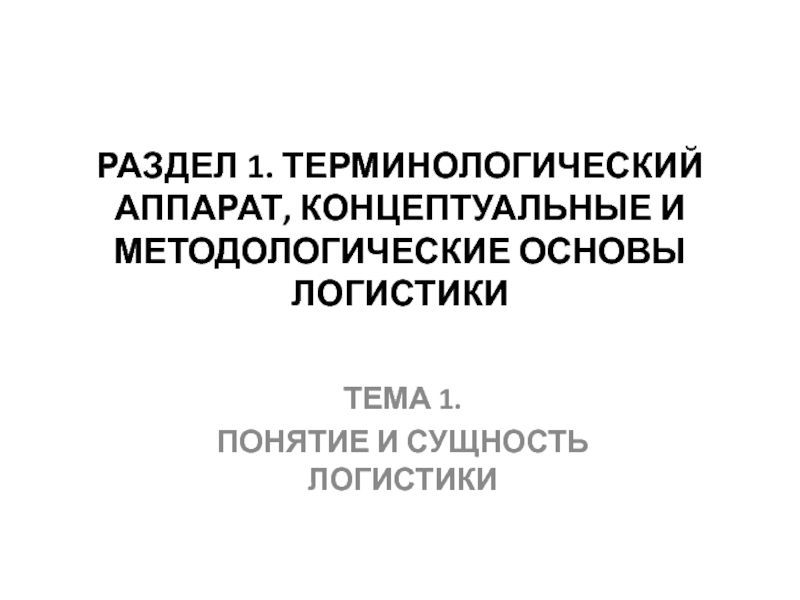Lecture 1
- Главная
- Разное
- Дизайн
- Бизнес и предпринимательство
- Аналитика
- Образование
- Развлечения
- Красота и здоровье
- Финансы
- Государство
- Путешествия
- Спорт
- Недвижимость
- Армия
- Графика
- Культурология
- Еда и кулинария
- Лингвистика
- Английский язык
- Астрономия
- Алгебра
- Биология
- География
- Детские презентации
- Информатика
- История
- Литература
- Маркетинг
- Математика
- Медицина
- Менеджмент
- Музыка
- МХК
- Немецкий язык
- ОБЖ
- Обществознание
- Окружающий мир
- Педагогика
- Русский язык
- Технология
- Физика
- Философия
- Химия
- Шаблоны, картинки для презентаций
- Экология
- Экономика
- Юриспруденция
Lecture 1. Strategic management презентация
Содержание
- 1. Lecture 1. Strategic management
- 2. Today’s Overview Introductions me, you, and etc.
- 3. Introductions me and your other Tutors Oliver
- 4. Module Outline what to expect 11 Lectures
- 5. Module Outline (cont’d) textbook 15 Chapters (focus
- 6. textbook structure Module Outline (cont’d)
- 7. Module Outline (cont’d) Seminars - a chance
- 8. Lecture 1 STRATEGIC MANAGEMENT AND STRATEGIC COMPETITIVENESS
- 9. Studying this chapter should provide you with
- 10. Definitions Strategic Competitiveness: is achieved when a
- 11. The Strategic Management Process A rational approach
- 12. The Strategic Management Process (cont’d)
- 13. The competitive landscape Scarce financial capital and
- 14. The global economy Free movement across borders
- 15. Technology & technological changes Technology
- 16. Vision and Mission Vision: the ideal
- 17. Vision Statements A carefully crafted vision statement
- 18. Vision Statements Purpose: Serve as foundation
- 19. A precise description of what an organization
- 20. Mission Statements (cont’d) Wal-Mart: “To
- 21. Mission Statements (cont’d) Purpose: To concisely describe
- 22. Stakeholders Stakeholders are individuals and groups
- 24. Strategic leaders May be anywhere in
- 25. The work of “effective” strategic leaders
- 26. Predicting outcomes of strategic decisions The
- 27. Takeaways The goals of strategic management process
- 28. HOMEWORK Read Chapter 1 and 2 of
- 29. Q&A Thank you!
Слайд 1Strategic Management I
(P13410)
FALL SEMESTER 2016
Thomas A Birtch
Thomas.Birtch@nottingham.edu.cn
Office hours: Wednesdays 2-4pm
or by appointment
Слайд 2Today’s Overview
Introductions
me, you, and etc.
Module Outline
what to expect, textbook, seminars, etc.
Lecture
1
Strategic management and strategic competitiveness (Chapter 1)
Strategic management and strategic competitiveness (Chapter 1)
Слайд 3Introductions
me and your other Tutors
Oliver Laasch, Ernest Southworth, and Michal Lemanski
Thomas
Birtch, PhD (Cantab), MBA (MIT)
Affiliations with NUBS, CAM, MIT, CUHK, and others
Background in industry and government
Consulted and worked in over 30 countries
Serial entrepreneur
you
Affiliations with NUBS, CAM, MIT, CUHK, and others
Background in industry and government
Consulted and worked in over 30 countries
Serial entrepreneur
you
Слайд 4Module Outline
what to expect
11 Lectures (face paced, interactive)
2 Seminars (case study
presentations)
90 minute exam (100%)
90 minute exam (100%)
Слайд 5Module Outline (cont’d)
textbook
15 Chapters (focus on key concepts, theories, and frameworks
and their application)
Слайд 7Module Outline (cont’d)
Seminars
- a chance to apply, re-inforce, and expand learning
Presentations
should be of a quality that could be delivered to C-suite level executives
in groups of about 5-6 students
max. 10 powerpoint slides (copies to be submitted to tutor)
Слайд 9Studying this chapter should provide you with the strategic management knowledge
needed to:
Define strategic competitiveness, strategy, competitive advantage, above-average returns, and the strategic management process.
Describe the competitive landscape and explain how globalization and technological changes shape it.
Describe vision and mission and discuss their usefulness.
Define stakeholders and describe their ability to influence organizations.
Describe the work of strategic leaders.
Explain the strategic management process.
Use the industrial organization (I/O) and resource-based models to explain how firms can earn above-average returns.
Define strategic competitiveness, strategy, competitive advantage, above-average returns, and the strategic management process.
Describe the competitive landscape and explain how globalization and technological changes shape it.
Describe vision and mission and discuss their usefulness.
Define stakeholders and describe their ability to influence organizations.
Describe the work of strategic leaders.
Explain the strategic management process.
Use the industrial organization (I/O) and resource-based models to explain how firms can earn above-average returns.
LEARNING OBJECTIVES
Слайд 10Definitions
Strategic Competitiveness: is achieved when a firm successfully formulates and implements
a value-creating strategy.
Strategy: is an integrated and coordinated set of commitments and actions designed to exploit core competencies and gain a competitive advantage.
Competitive Advantage: a firm has a competitive advantage when it implements a strategy competitors are unable to duplicate or find too costly to imitate.
Above-average returns: are returns in excess of what an investor expects to earn from other investments with a similar amount of risk.
e.g., Apple vs. Xiaomi, Samsung vs. TCL, Lenovo vs. IBM
Strategy: is an integrated and coordinated set of commitments and actions designed to exploit core competencies and gain a competitive advantage.
Competitive Advantage: a firm has a competitive advantage when it implements a strategy competitors are unable to duplicate or find too costly to imitate.
Above-average returns: are returns in excess of what an investor expects to earn from other investments with a similar amount of risk.
e.g., Apple vs. Xiaomi, Samsung vs. TCL, Lenovo vs. IBM
Слайд 11The Strategic Management Process
A rational approach to achieve strategic competitiveness and
earn above-average returns
Analysis of external environment and internal organisation to identify opportunities and threats in the marketplace
Deciding how to use resources, capabilities, core competencies, and competitive advantage to pursue opportunities and overcome threats from external environment by cooperative strategies
Strategy implementation will require entrepreneurship and renewal – a dynamic process
All strategic processes will have “ethical” dimensions
Analysis of external environment and internal organisation to identify opportunities and threats in the marketplace
Deciding how to use resources, capabilities, core competencies, and competitive advantage to pursue opportunities and overcome threats from external environment by cooperative strategies
Strategy implementation will require entrepreneurship and renewal – a dynamic process
All strategic processes will have “ethical” dimensions
Слайд 13The competitive landscape
Scarce financial capital and volatile markets
Partnerships blur boundaries
Conventional sources
of competitive advantage no longer effective
Managers need flexible mindset
Increasing government interference in markets
Hypercompetition – inherent market instability driven by global economy and rapid technological change
Managers need flexible mindset
Increasing government interference in markets
Hypercompetition – inherent market instability driven by global economy and rapid technological change
Слайд 14The global economy
Free movement across borders
World’s largest single market is Europe
Emergence
and rapid predicted growth of BRIC economies
The march of globalisation – increasing economic interdependence and growing opportunities across country borders
Higher performance standards
Global market risks – acquiring local market knowledge, over-diversification
The march of globalisation – increasing economic interdependence and growing opportunities across country borders
Higher performance standards
Global market risks – acquiring local market knowledge, over-diversification
Слайд 15
Technology & technological changes
Technology diffusion and perpetual innovation
Rapid response to competition
Disruptive
technologies creating new industries and overturning old markets
The information age – global proliferation of computing power and its linkage through the Internet
Increasing knowledge intensity – survival in hypercompetition means acquiring, integrating, and applying knowledge for competitive advantage
Strategic flexibility required to respond to risk and uncertainty
Continuous learning
The information age – global proliferation of computing power and its linkage through the Internet
Increasing knowledge intensity – survival in hypercompetition means acquiring, integrating, and applying knowledge for competitive advantage
Strategic flexibility required to respond to risk and uncertainty
Continuous learning
Слайд 16Vision and Mission
Vision: the ideal for the organisation and its
future direction (vision statements aimed at hearts & minds; should be clearly tied to external environment and internal organisation of firm)
Mission: concrete view of the firm’s business, its customers, and how it will serve them (flows from vision & should provide direction for strategic action)
A vision statement versus a mission statement. Mission statements are present-based statements designed to convey a sense of why the company exists to both members of the company and the external community. Vision statements are future-based and are meant to inspire and give direction to the employees of the company, rather than to customers. A mission statement answers the question, "Why does my business exist?" while a vision statement answers the question, "Where do I see my business going?"
Mission: concrete view of the firm’s business, its customers, and how it will serve them (flows from vision & should provide direction for strategic action)
A vision statement versus a mission statement. Mission statements are present-based statements designed to convey a sense of why the company exists to both members of the company and the external community. Vision statements are future-based and are meant to inspire and give direction to the employees of the company, rather than to customers. A mission statement answers the question, "Why does my business exist?" while a vision statement answers the question, "Where do I see my business going?"
Слайд 17Vision Statements
A carefully crafted vision statement can help communicate company's goals
to employees and management in a single sentence. Examples,
American Express: “To be the world's most respected service brand"
Caterpillar: “To be the global leader in customer value”
Ford: “To become the world's leading Consumer Company for automotive products and services.”
Kraft: “Helping People Around the World Eat and Live Better …”
American Express: “To be the world's most respected service brand"
Caterpillar: “To be the global leader in customer value”
Ford: “To become the world's leading Consumer Company for automotive products and services.”
Kraft: “Helping People Around the World Eat and Live Better …”
Слайд 18Vision Statements
Purpose:
Serve as foundation for a broader strategic plan
Motivate existing/attract potential employees
by clearly categorising goals
Focus company efforts on strategic opportunities and building competencies that advance the company's vision
Help companies differentiate from competitors.
Focus company efforts on strategic opportunities and building competencies that advance the company's vision
Help companies differentiate from competitors.
Слайд 19A precise description of what an organization does (i.e., describing the
business the organization is in and why the organization exists currently). Examples,
FedEx: “will produce superior financial returns for its shareowners by providing high value-added logistics, transportation and related business services through focused operating companies. Customer requirements will be met in the highest quality manner appropriate to each market segment served. FedEx will strive to develop mutually rewarding relationships with its employees, partners and suppliers. Safety will be the first consideration in all operations. Corporate activities will be conducted to the highest ethical and professional standards.”
FedEx: “will produce superior financial returns for its shareowners by providing high value-added logistics, transportation and related business services through focused operating companies. Customer requirements will be met in the highest quality manner appropriate to each market segment served. FedEx will strive to develop mutually rewarding relationships with its employees, partners and suppliers. Safety will be the first consideration in all operations. Corporate activities will be conducted to the highest ethical and professional standards.”
Mission Statements
Слайд 20Mission Statements (cont’d)
Wal-Mart: “To give ordinary folk the chance to buy
the same thing as rich people.”
Westin Hotels and Resorts: “In order to realize our Vision, our Mission must be to exceed the expectations of our customers, whom we define as guests, partners, and fellow employees.(mission) We will accomplish this by committing to our shared values and by achieving the highest levels of customer satisfaction, with extraordinary emphasis on the creation of value. (strategy) In this way we will ensure that our profit, quality and growth goals are met.”
Westin Hotels and Resorts: “In order to realize our Vision, our Mission must be to exceed the expectations of our customers, whom we define as guests, partners, and fellow employees.(mission) We will accomplish this by committing to our shared values and by achieving the highest levels of customer satisfaction, with extraordinary emphasis on the creation of value. (strategy) In this way we will ensure that our profit, quality and growth goals are met.”
Слайд 21Mission Statements (cont’d)
Purpose:
To concisely describe the overall purpose of the organization
Considers
the organisation's products, services, markets, values, concern for public image, and priorities for survival
Changes to reflect new strategies
Enables management and employees to infer some order of priorities in how products and services are delivered
Clearly separates the mission of the organisation from other organisations.
Changes to reflect new strategies
Enables management and employees to infer some order of priorities in how products and services are delivered
Clearly separates the mission of the organisation from other organisations.
Слайд 22Stakeholders
Stakeholders are individuals and groups who can affect and/or are
affected by the vision and mission.
Stakeholder relationships must be managed for competitive advantage
Classifications of stakeholders:
Capital market stakeholders
Product market stakeholders
Organisational stakeholders
Societal stakeholders
Stakeholders’ objectives can conflict, so they must be managed and prioritised
Stakeholder relationships must be managed for competitive advantage
Classifications of stakeholders:
Capital market stakeholders
Product market stakeholders
Organisational stakeholders
Societal stakeholders
Stakeholders’ objectives can conflict, so they must be managed and prioritised
Слайд 24Strategic leaders
May be anywhere in the firm
Will be decisive, committed
to nurturing those around them, and helping the firm “create value” for stakeholder groups
Strategic leadership will be influenced by, and will itself influence, organisational culture.
Strategic leadership will be influenced by, and will itself influence, organisational culture.
Слайд 25The work of “effective” strategic leaders
Distinguished by honesty, tenacity, and
drive to accomplish more through their people
Strategic leaders set the ethical tone of the business
They provide the vision and make it work
Strategic leaders set the ethical tone of the business
They provide the vision and make it work
Слайд 26Predicting outcomes of strategic decisions
The total profits earned in an
industry at all points along the value chain
Understanding these primary sources of profit by:
Defining boundaries of profit pools
Estimating size of pools
Estimating size of value chain activity in the pool
Reconciling these calculations
Other strategic outcomes
Identifying these primary sources enables leaders to select successful strategies
Understanding these primary sources of profit by:
Defining boundaries of profit pools
Estimating size of pools
Estimating size of value chain activity in the pool
Reconciling these calculations
Other strategic outcomes
Identifying these primary sources enables leaders to select successful strategies
Слайд 27Takeaways
The goals of strategic management process are strategic competitiveness and above-average
returns.
The current nature of competition is turbulent and chaotic.
Vision and mission are formed through study of internal and external environments
Stakeholder analysis and prioritisation is needed to maintain support of key groups
Strategic leaders enable the firm’s mission and vision, can be anywhere in the organisation, and calculate profit pools linking to value chain activities to predict outcomes of strategic decisions.
The current nature of competition is turbulent and chaotic.
Vision and mission are formed through study of internal and external environments
Stakeholder analysis and prioritisation is needed to maintain support of key groups
Strategic leaders enable the firm’s mission and vision, can be anywhere in the organisation, and calculate profit pools linking to value chain activities to predict outcomes of strategic decisions.
Слайд 28HOMEWORK
Read Chapter 1 and 2 of the textbook
Come to class prepared
to discuss/present answers to the following “Apple” case study (handout) questions:
What is Apple’s strategy and competitive advantage? Has it achieved strategic competitiveness?
Describe Apple’s competitive landscape and explain how globalization and technological changes shape it?
Describe Apple’s vision and mission and discuss their usefulness?
Who are Apple’s stakeholders and describe their ability to influence organisations?
What are Apple’s primary sources of profit? Compare these to a competitor such as Xiaomi.
What is Apple’s strategy and competitive advantage? Has it achieved strategic competitiveness?
Describe Apple’s competitive landscape and explain how globalization and technological changes shape it?
Describe Apple’s vision and mission and discuss their usefulness?
Who are Apple’s stakeholders and describe their ability to influence organisations?
What are Apple’s primary sources of profit? Compare these to a competitor such as Xiaomi.
